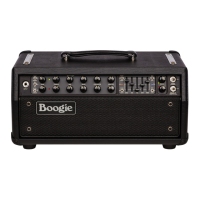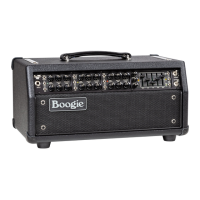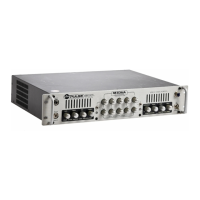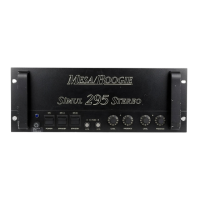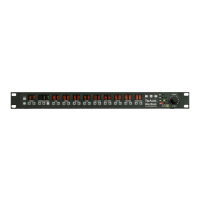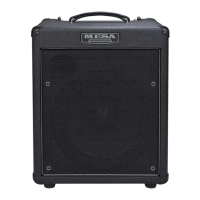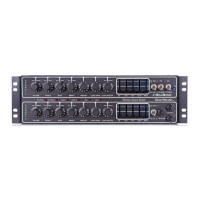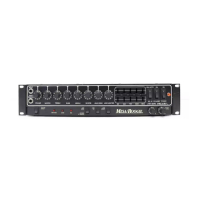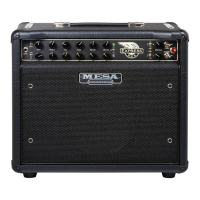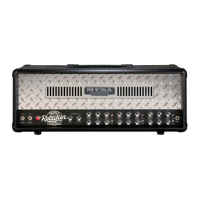To connect your outboard processor(s) to the Effects Loop:
Connect the 1. SEND jack on the MARK V Rear Panel to your processor’s INPUT using a high quality shielded cable of the short-
est possible length.
Connect the 2. RETURN jack of the MARK V to your processor’s OUTPUT also using a high quality shielded cable of the shortest
possible length.
Adjust the 3. SEND LEVEL control on the Rear Panel of the MARK V to achieve an adequate match on the INPUT level indicator
of your processor. Adjust the processor Output level stage (hopefully your processor has an OUTPUT LEVEL control) to match
the volume present before connecting the device(s) to the MARK V. You can check this by simply removing both the cables from
the SEND and RETURN simultaneously.
Use the Front Panel OUTPUT control to raise and lower the overall volume as it is essentially an Effects Return Stage volume 4.
control.
NOTE: It is normal to experience some amount of change to the sound when using the EFFECTS LOOP. Normally this is minimal
and most often appears as a subtle roll off in top end characteristics. This is a series loop and therefore the results you get using
it greatly depend upon the quality of the devices you insert into the loop. We strongly suggest taking your amplifier and trying any
processor before buying it to make sure it is compatible with the MARK V. Normally, the more professional series lines of most
companies building outboard gear work well. However we have seen even so called pro stuff produce less than satisfactory results
in terms of tonal thievery.
NOTE: Engaging the EFFECTS LOOP circuitry adds a substantial amount of circuitry and this additional circuit reverses the phase
of the entire amp. This is no cause for alarm and if we hadn’t told you of this, you probably would never have known. Sonically there
is no difference other than the incredibly subtle difference in the sound the circuit itself adds.
The only time you will ever need to consider this reversal of overall phase is if you ever run the MARK V in Stereo with another amp
(not another MARK V as it would be in phase with its Loop activated). In this case you would probably want to separate the two
amplifiers by at least a few feet if not on the other side of the stage.
REVERB:
The MARK V boasts one of the best sounding Reverb circuits in the business and extensive switching of both the
location in the circuit and the voicing of the Reverb are employed to ensure the most authentic rendition of each Mode. Individual
REVERB mix controls for each Channel allow you to set the desired wet/dry of the rich all-tube Reverb effect for each Channel without
compromise.
If you wish to bypass the Reverb simply turn the mix control off (7:30) and the dry signal will come through
unaffected. The REVERB effect can also be taken in and out of the signal path with the REV button on
the MARK V Footswitch.
NOTE: There is slightly less Reverb effect available in a totally wet mix setting (5:30) in Channel 2 than is available in Channels 1 and
3. This is due to the architecture of the Channel and the signal path of the Modes. Most likely you will not find this an inconvenience
as Channel 2 is most often configured for overdriven rhythm parts and high gain lead work in the MARK I mode. The only time you
may find that you have to run the Reverb control of Channel 2 much higher than those of the other Channels is in the MARK I Mode
for lower gain Blues styles.
rear panel: fe a t u r e S (Continued)
PAGE 41
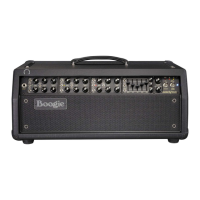
